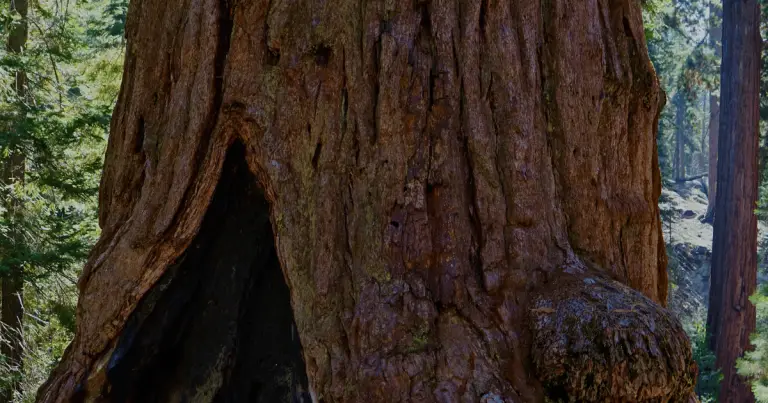wildlife spotting tips in Great Smoky Mountains National Park
Many visitors want to spot animals in Great Smoky Mountains National Park but do not know where to look. The park is home to more than 65 types of mammals and over 200 bird species.
This guide shares easy wildlife spotting tips and safe practices for better animal observation on hiking trails. Discover how you can have a safer and more exciting adventure today.
Key Takeaways
- Early mornings and late evenings are the best times to spot wildlife like deer, bears, and birds. Animals are more active in cooler weather.
- Keep at least 50 yards from all wild animals. Use binoculars or a zoom lens for closer views without disturbing them.
- Top spots for wildlife observation include Cades Cove, Clingmans Dome (the park’s highest point at 6,643 feet), Cataloochee Valley, offshoot trails, and nearby campgrounds.
- Never feed wildlife. Human food harms animals’ health and can make encounters dangerous for people and animals alike.
- Always stay on marked trails and carry bear spray in areas with known bear activity to ensure safety during your visit.
Best Times for Wildlife Viewing
Wildlife shows up best early in the morning or late in the evening. These times offer cooler weather, making animals more active and easier to spot.
Early morning or late evening
Cades Cove and Clingmans Dome offer great opportunities for wildlife observation during early morning or late evening. Animals are most active at these times. You can spot deer, bears, and various birds as they move about looking for food.
Cooler weather also helps animals feel more comfortable outside.
Using binoculars enhances your experience in the Great Smoky Mountains National Park. Keep a safe distance of at least 50 yards from any wild animal you encounter. Staying on designated trails protects both you and the habitats around you while enjoying nature photography or birdwatching.
Patience is key in wildlife spotting; arrive early to catch the best views.
Cooler weather
Cooler weather brings out more wildlife in Great Smoky Mountains National Park. Animals become active as temperatures drop, making it a prime time for wildlife observation. Species such as deer and bears are often seen foraging for food before winter.
Birdwatchers also benefit from cooler conditions since many birds migrate during this season.
Hiking trails offer excellent opportunities to spot animals while enjoying the scenery. Early mornings or late afternoons provide the best chances for sightings due to lower human activity and cooler air.
Staying alert increases your chance of witnessing animal behavior uninterrupted, creating moments perfect for nature photography. The next section covers safe practices for viewing wildlife while you explore these beautiful areas.
Safe Practices for Viewing Wildlife
Wildlife spotting can be thrilling, but safety is crucial. Maintain a distance of at least 50 yards from animals to ensure their comfort and your safety. Use binoculars or zoom lenses for closer views without disturbing them.
Stay on marked trails to protect both yourself and the wildlife habitat. Carry bear spray in areas known for bear activity; this tool provides an extra layer of security during your adventures.
Maintain a safe distance (at least 50 yards)
Maintaining a safe distance from wildlife is crucial for your safety and the animal’s well-being. Keep at least 50 yards away from animals like bears, deer, and other species. This distance allows you to observe their natural behavior without causing stress or harm.
Using binoculars or a zoom lens can help you capture great photos while respecting their space.
Stay on designated trails during your visit to Great Smoky Mountains National Park. Staying on these paths reduces your chances of unexpectedly encountering wildlife up close. Carry bear spray in areas known for bear sightings as an extra safety measure.
Following these guidelines ensures that both you and the park’s diverse ecosystems remain protected during your wildlife observation adventures.
Use binoculars or zoom lens
Using binoculars or a zoom lens greatly enhances your wildlife observation in Great Smoky Mountains National Park. These tools allow you to see animals up close without disturbing them.
Binoculars are perfect for bird watching and spotting deer from a distance. A zoom lens on your camera captures stunning nature photography, showcasing the park’s ecological diversity.
Always keep your binoculars handy while hiking trails, especially around popular areas like Cades Cove and Cataloochee Valley. With these devices, you can enjoy animal behavior safely from afar.
They help ensure that your encounters remain peaceful and respectful towards wildlife habitats.
Stay on designated trails
Using binoculars or a zoom lens can enhance your wildlife observation experience. Staying on designated trails helps protect the park’s ecosystems and ensures your safety. The Great Smoky Mountains National Park has many hiking trails marked for visitor use.
These paths lead you to scenic viewpoints while minimizing disturbances to animal habitats.
Wildlife is more likely to appear along these established routes. Straying off the trail can disrupt animal behavior and ecological balance in sensitive areas. Following park regulations keeps both visitors and animals safe from potential dangers, like bear sightings.
Always prioritize nature photography within safe boundaries by capturing moments from the trails designed for viewing wildlife in their natural setting.
Carry bear spray in bear-dense areas
Staying on designated trails ensures safety while enjoying the stunning scenery. In bear-dense areas, carry bear spray at all times. Bear encounters can happen unexpectedly, so being prepared is crucial for wildlife observation and outdoor safety.
This easy-to-use deterrent helps protect you if a bear approaches too closely.
Choose bear spray that has a minimum range of 25 feet for effective use. Store it where you can access it quickly without removing your backpack. Practice how to use it ahead of time to feel confident in case of an encounter with bears or other wildlife.
Following these precautions lets you enjoy viewing animal behavior safely in Great Smoky Mountains National Park.
Avoid Feeding Wildlife
Feeding wildlife harms animals and disrupts their natural behavior. It can also lead to dangerous encounters with humans. Keep your snacks to yourself while enjoying the park. Respecting nature helps keep both you and the wildlife safe.
Explore more tips on how to enjoy wildlife responsibly in Great Smoky Mountains National Park!
Harmful to animals
Feeding wildlife harms animals. Human food can disrupt their natural behavior and diet. Animals may become reliant on these handouts, losing their instinct to forage. This change can lead to nutritional issues and make them more vulnerable to predators.
Animal encounters can turn dangerous when they associate humans with food. For example, a bear that learns to find snacks near people might approach too closely, putting both parties at risk.
Avoid feeding any wildlife in Great Smoky Mountains National Park for everyone’s safety.
Next, let’s explore safe practices for viewing wildlife while enjoying nature’s beauty.
Can lead to dangerous encounters
Feeding wildlife in Great Smoky Mountains National Park can lead to dangerous encounters. Animals that rely on humans for food may lose their natural instincts. This loss can make them more aggressive and unpredictable.
People have experienced close calls with bears and other animals when they attempt to feed them.
Wildlife observation becomes risky when animals no longer fear people. They might approach too closely, thinking they will receive food. Always maintain a safe distance of at least 50 yards from larger creatures like bears; use binoculars or zoom lenses for better views instead of feeding them.
Protect both yourself and the beautiful wildlife in the park by respecting their space and habits.
Best Locations for Wildlife Viewing
Cades Cove and Cataloochee Valley offer prime spots for wildlife observation in Great Smoky Mountains National Park. These areas feature stunning landscapes and abundant animal activity.
Hikers often spot deer, elk, and bears in these regions. Bird watchers can also enjoy many species flitting through the trees. Explore these locations to capture incredible nature photography opportunities as you enjoy the park’s beauty.
Read on to discover more about enhancing your experience!
Cades Cove
Cades Cove offers breathtaking views and fantastic wildlife observation opportunities. This scenic valley attracts many visitors year-round. Travelers often spot deer, black bears, and various bird species here.
Early mornings or late evenings are the best times for wildlife viewing. Bring binoculars or a zoom lens to get closer looks at animals without disturbing them.
The area has several hiking trails that lead to great vantage points. Hiking these trails can enhance your chances of seeing animal behavior up close. Remember to follow safety precautions like staying on designated paths and keeping a safe distance from all wildlife.
These practices help protect both you and the animals in their natural habitat, ensuring everyone enjoys this beautiful national park experience fully, especially as you move on to Clingmans Dome for even more stunning views and sightings.
Clingmans Dome
After enjoying the wildlife in Cades Cove, head to Clingmans Dome for stunning views. This is the highest point in the Great Smoky Mountains National Park. At 6,643 feet, it offers a fantastic spot for bird watching and nature photography.
The observation tower stands tall, giving visitors panoramic views of the diverse landscape.
Biodiversity thrives here due to its unique ecology. Keep an eye out for black bears and various bird species along hiking trails around Clingmans Dome. Early morning or late evening increases your chances of spotting wildlife.
Stay safe by keeping a distance from animals; use binoculars to observe them closely without disturbing their natural behavior.
Offshoot trails
Offshoot trails in Great Smoky Mountains National Park offer unique opportunities for wildlife observation. These smaller paths lead you to less-traveled areas where animals often hide.
Cades Cove and Cataloochee Valley are two great spots to explore. You may spot deer, elk, and various birds along these trails. Each offshoot trail provides excellent vantage points for nature photography.
Staying quiet increases your chances of seeing animals in their natural behavior. Bring binoculars or a zoom lens to capture stunning images from a distance. Offshoot trails also give hikers access to scenic views that showcase the park’s biodiversity.
Make sure you stick to designated paths while exploring these quieter routes so you can enjoy safety during your adventure in the great outdoors. Safe practices for viewing wildlife are essential as well.
Campgrounds near viewing areas
Cades Cove Campground offers a great spot for wildlife observation. Visitors often see deer and black bears roaming nearby. The campground sits close to Cades Cove Loop Road, which is popular for both hiking trails and scenic views.
Cataloochee Valley provides another excellent option. This area attracts elk and other animals, especially during dawn or dusk. Campers can enjoy nature photography while they wait for animal sightings.
Staying in these campgrounds enhances the experience of spotting wildlife in Great Smoky Mountains National Park.
Winter season
Winter offers unique wildlife viewing opportunities in Great Smoky Mountains National Park. Many animals are more visible against the snowy backdrop. Bird watching becomes exciting during this season as some birds migrate or gather in flocks.
Cades Cove and Cataloochee Valley attract visitors searching for bear sightings. These areas provide excellent chances to observe animal behavior while staying safe on hiking trails.
Keep your distance from wildlife, maintain safe practices, and enjoy nature photography during your trip.
FAQs
1. Where are the best places for wildlife observation in Great Smoky Mountains National Park?
Cades Cove and Cataloochee Valley offer top spots for animal tracking and bird watching. These areas have open fields, forests, and scenic views that attract many species.
2. What safety precautions should I follow when looking for bear sightings?
Keep a safe distance from all animals, especially bears. Carry bear spray on nature trails and stay alert to animal behavior at all times.
3. How can I improve my nature photography while hiking trails in the park?
Use quiet steps on hiking paths to avoid startling animals. Bring a zoom lens for close shots without getting too near wildlife or disturbing their natural ecology.
4. Which hiking tips help with better wildlife spotting during bird watching trips?
Start early since many birds are active at dawn. Walk slowly along nature trails; listen closely to calls and watch tree branches or open meadows.
5. Why is conservation important when enjoying ecotourism activities like wildlife observation?
Conservation protects habitats so future visitors can enjoy diverse animal life and healthy ecosystems within the national park boundaries. Responsible behavior supports both local ecology and ongoing preservation efforts.






